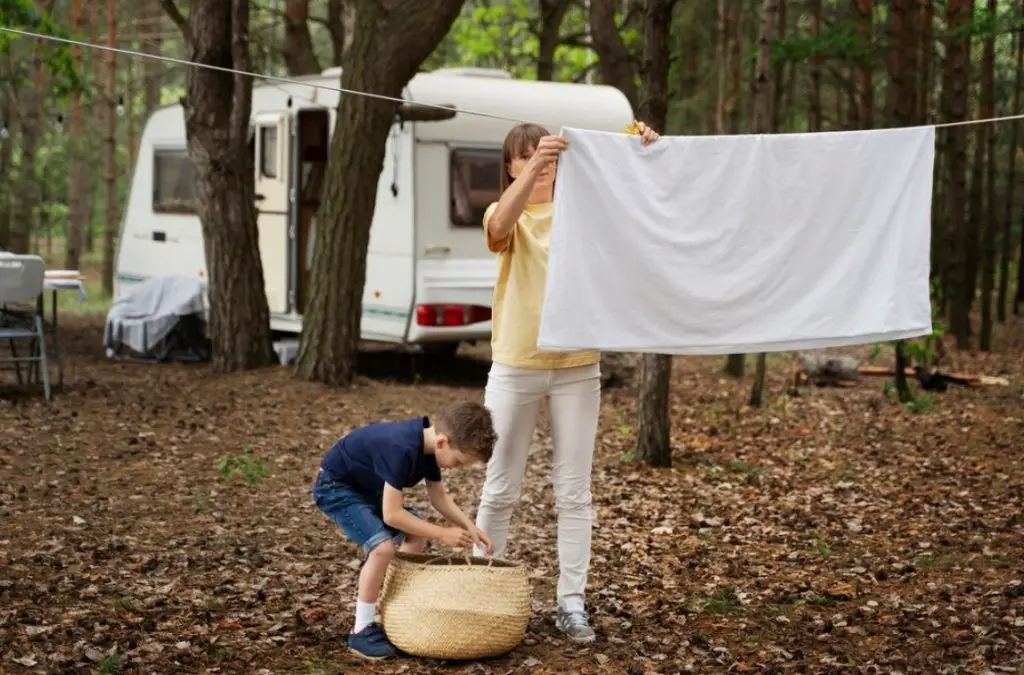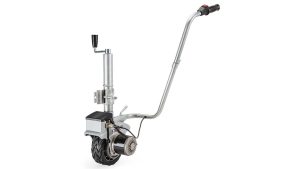A camping clothesline can be a valuable addition to your camping gear. It allows you to dry clothes without using electricity or disposable products, which is better for the environment and can save you money. However, tying a camping clothesline can be tricky, especially if you don’t have much experience with knots. In this article, we’ll walk you through the steps for tying a camping clothesline, so you can enjoy all the benefits of this useful accessory.
Choosing the Right Rope
The first step in tying a camping clothesline is choosing the right rope. You’ll want a rope that is strong, durable, and long enough to span the distance between two trees or other anchor points. Nylon rope is a good choice for camping clotheslines because it is strong and lightweight. Paracord is also a popular option because it is very strong and versatile.
Whichever type of rope you choose, make sure it is long enough to accommodate all of the clothes you want to dry. You should also consider the weight of the clothes you’ll be hanging and choose a rope that can support that weight.
Choosing the Right Anchor Points
Once you’ve chosen your rope, you’ll need to find the right anchor points to tie it to. Ideally, you’ll want two trees or other sturdy objects that are at least 10-15 feet apart. You’ll also want to make sure that the anchor points are strong enough to support the weight of the rope and the clothes you’ll be hanging.
If you can’t find two trees or other suitable anchor points, you can use two poles or stakes and tie the rope between them. Just make sure the poles or stakes are secure and won’t tip over when you hang clothes on the line.
Tying the Rope
Now it’s time to tie the rope. There are several knots that you can use to tie a camping clothesline, but we’ll focus on the most common one: the taut-line hitch.
- Wrap the rope around the first anchor point and tie a simple knot to secure it.
- Pull the rope tight and wrap it around the second anchor point.
- Bring the rope back to the first anchor point and wrap it around the rope itself, about 12 inches from the knot you tied in step 1.
- Bring the rope back to the second anchor point and wrap it around the rope itself, about 12 inches from the point where the rope is wrapped around the anchor point.
- Bring the rope back to the first anchor point and wrap it around the rope again, this time about 6 inches from the previous wrap.
- Bring the rope back to the second anchor point and wrap it around the rope again, this time about 6 inches from the previous wrap.
- Tie a half hitch to secure the rope in place.
- Repeat steps 5-7 for as many wraps as you need to make the line taut.
Adjusting the Line
Once you’ve tied the taut-line hitch, you can adjust the line to make it tighter or looser as needed. To tighten the line, pull on the end of the rope that is wrapped around the second anchor point. To loosen the line, pull on the end of the rope that is wrapped around the first anchor point.
Hanging Clothes
Now that you’ve tied the camping clothesline, you can start hanging clothes. To do this, simply use clothespins or clips to attach the clothes to the rope. Make sure you space the clothes out evenly and don’t overload the line, as this can cause it to sag or break.
Removing the Clothesline
When you’re ready to take down the clothesline, simply remove the
clothes from the line and untie the taut-line hitch. Be careful not to drop the rope or let it tangle, as this can make it difficult to use the next time you need it.
Storing the Clothesline
After you’ve taken down the clothesline, you’ll want to store it properly so it stays in good condition and is ready to use the next time you go camping. The best way to store a camping clothesline is to wind it into a coil and secure it with a rubber band or piece of string. This will keep the rope from getting tangled or damaged while it’s in storage.
Other Tips
Here are a few additional tips to keep in mind when tying a camping clothesline:
- Make sure the clothesline is at least 6 feet off the ground to keep it out of reach of wildlife.
- Don’t tie the clothesline too tightly, as this can put too much strain on the rope and cause it to break.
- If you’re using a paracord rope, make sure you know how to tie a proper knot to avoid damaging the cord.
- Always inspect the rope and anchor points before using the clothesline to make sure everything is secure and in good condition.
Conclusion
Tying a camping clothesline can seem daunting at first, but with a little practice, you’ll be able to do it quickly and easily. Remember to choose the right rope and anchor points, tie the taut-line hitch, adjust the line as needed, hang your clothes evenly, and store the clothesline properly when you’re done. By following these steps, you’ll be able to enjoy the benefits of a camping clothesline on all your outdoor adventures. Not only will it save you money and energy, but it will also help protect the environment by reducing waste and pollution.







